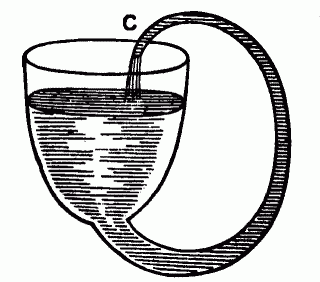Marc Abrahams's Blog, page 493
May 12, 2013
Best space music videos: Hadfield/Bowie & Coleman/Anderson/Bach
These are our picks for best space music videos of the past few years. In our view, they qualify as being improbable in all the best senses of that word. Both videos show performances done by musician-astronauts in spacecraft orbiting the earth.
Chris Hadfield performs David Bowie‘s “Space Oddity”:
Cady Coleman and Ian Anderson (of Jethro Tull) perform Ian Anderson’s adaptation of a Bach bouree:
On strictly technical grounds (so to speak), these are high points of modern music.
BONUS (unrelated): Bug Music by Don Byron

Mind, the Gap
Some British psychiatrists are going to war with some British psychologists, suggests an article by Jamie Doward in The Observer. The article sports this headline, subheadline, and first paragraphs:
Psychiatrists under fire in mental health battle
British Psychological Society to launch attack on rival profession, casting doubt on biomedical model of mental illnessThere is no scientific evidence that psychiatric diagnoses such as schizophrenia and bipolar disorder are valid or useful, according to the leading body representing Britain’s clinical psychologists.
In a groundbreaking move that has already prompted a fierce backlash from psychiatrists, the British Psychological Society’s division of clinical psychology (DCP) will on Monday issue a statement declaring that, given the lack of evidence, it is time for a “paradigm shift” in how the issues of mental health are understood….
The Observer gave vent to spokespersons from each opposing camp.
(Thanks to investigator David Dobbs for bringing this to our attention.)

May 11, 2013
Simanek’s Perpetual Futility
Donald E. Simanek‘s “Perpetual Futility—A short history of the search for perpetual motion“ is an introduction to the perhaps perpetual search for perpetual motion. It begins:
Popular histories too often present perpetual motion machines as “freaks and curiosities” of engineering without telling us just how they were understood at the time. They also fail to inform us that even in the earliest history of science and engineering, many persons were able to see the futility and folly of attempts to achieve perpetual motion.
Sometimes a particular device comes to us with a label, such as “Bishop Wilkins’ magnetic perpetual motion machine.” Popular articles leave the impression that the inventor believed it was a perpetual motion machine. In fact, very often the device was presented and described to illustrate the futility of the quest for perpetual motion….
BONUS: Simanek’s museum of unworkable devices

Parents’ Saliva: A Cleaning Fluid for Pacifiers
The presumed link between cleanliness and parental goodliness may need a slight refocusing, suggests this study:
“Pacifier Cleaning Practices and Risk of Allergy Development,” Bill Hesselmar [pictured here], Fei Sjöberg, Robert Saalman, Nils Åberg, Ingegerd Adlerberth and , Pediatrics, epub May 6, 2013. The authors, at Queen Silvia Children’s Hospital, Sahlgrenska University Hospital, and the University of Gothenburg, Sweden, explain:
We investigated whether pacifier cleaning practices affected the risk of allergy development…. Children whose parents “cleaned” their pacifier by sucking it were less likely to have asthma, eczema, and sensitization at 18 months of age than children whose parents did not use this cleaning technique. Protection against eczema remained at age 36 months.
CONCLUSIONS: Parental sucking of their infant’s pacifier may reduce the risk of allergy development, possibly via immune stimulation by microbes transferred to the infant via the parent’s saliva.
(Thanks to investigator Ron Josephson for bringing this to our attention.)
The New York Times‘s Wellness blog discusses this.

Sizeable Complaints of Average Men [organ]
Some men like to complain. Some people think about how to respond to those complaints. Thus this study:
“Position Paper: Management of Men Complaining of a Small Penis Despite an Actually Normal Size,” Hussein Ghanem [pictured here, below], Sidney Glina, Pierre Assalian, Jacques Buvat, Journal of Sexual Medicine, vol. 10, no. 1, January 2013, pp. 294–303. The authors, at Cairo University, Cairo, Egypt, Hospital Ipiranga, São Paulo, Brazil, Montreal General Hospital, Montreal, Canada, AND Centre ETPARP, Lille, France, explain:
“We reviewed the literature and evaluated the evidence about what the normal penile size is, what patients complaining of a small penis usually suffer from, benefits vs. complications of surgery, penile stretching or traction devices, and outcome with patient education and counseling…. We propose a practical approach for evaluating and counseling patients complaining of a small-sized penis.”

Lead author Hussein Ghanem
(Thanks to investigator Neil Martin for bringing this to our attention.)
BONUS (possibly unrelated): The song “Hormones”, with music by Jacques Buvat, possibly not the same Jacques Buvat:

Dead Duck Day is approaching
Kees Moeliker writes, in his blog:
Wednesday June 5th it is Dead Duck Day again. At exactly 17:55h we will honour the mallard that is known to science as the first (documented) ‘victim’ of homosexual necrophilia in that species. Please join for this short open air ceremony next to the new wing of the Natural History Museum Rotterdam, where the duck (now museum specimen NMR 9989-00232) has met his dramatic end. We will discuss (new) ways to prevent birds from colliding with glass (buildings) and the special Dead Duck Day Message of a prominent (duck) scientist will be read.
I failed to report about last years Dead Duck Day (the 17th), so to get you into the mood, here is what happened on June 5th 2012….[read the rest at Kees's blog]
BONUS: Kees’s TED Talk, “How a Dead Duck Changed My Life”:

May 10, 2013
A philosopher unshod
“All you really need to do is take off your shoes and listen to your feet. It’s really that simple.”
—So writes the modern philosopher John Sifferman.

What Does or Doesn’t Suffocate You Might Make You Slim
Dieting takes a new turn in this study:
“Chronic carbon monoxide treatment attenuates development of obesity and remodels adipocytes in mice fed a high fat diet,” P A Hosick, A A AlAmodi, M V Storm, M U Gousset, B E Pruett, W Gray III, J Stout and D E Stec [pictured here], International Journal of Obesity, epub April 30, 2013. The authors, at the University of Mississippi Medical Center in Jackson, explain:
“In this study, we determined the effect of chronic low level administration of a specific CO [carbon monoxide] donor on the progression of obesity and its effects on metabolism and adipocyte biology in mice fed a high fat diet.”
(Thanks to investigator Ivan Oransky for bringing this to our attention.)

How ‘human’ are birds compared to, say, dogs?
One possible way of answering such a question might be to examine what kind of names people tend to give to them. Substantial groundwork was laid out in ‘La pensée sauvage’ written in 1962 by the eminent French anthropologist and ethnologist (the late) Claude Lévi-Strauss. The book outlined his discoveries regarding subtle differences in the names given to birds, dogs, cows and racehorses etc. Dogs, he found, might have names like Fido or Sultan, whereas birds can be called Claude or Margot. Some have interpreted his findings to mean that that birds are more likely to be given ‘human-like’ names than are dogs or other pets, and so by extrapolation they might even be considered to be ‘more human’. But, 45 years later, this concept has been challenged by by professor Ernest L. Abel Ph.D. (of the Obstetrics/Gynecology dept. at the School of Medicine, Wayne state
University, Detroit, US) who explains, in a 2007 paper for the journal Names: A Journal of Onomastics, (Volume 55, Number 4, pp. 349-353) ‘
“This study tested Levi-Strauss’s hypothesis that birds are more likely to be given human names than are dogs or other pets. The hypothesis was not supported. Instead, dogs (and cats) are much more likely to be given human names. The results were interpreted in terms of the relationships people feel with different kinds of pets. Pets housed outside the home are least likely to be given human names. Inside the house, pets kept in cages are less likely to be given human names than are pets allowed to roam freely within the home.”
The next year, professor Abel went on to further-refine understanding of bird-naming protocols with a paper for the journal Psychological Reports (Volume 102, Issue , pp. 271-272.) in which he explains how – PARROTS ARE “MORE HUMAN” THAN CHICKENS.
“Analysis of an Internet database of pets’ names showed owners were more likely to give anthropomorphic names to pets living within homes than those living outside.”
For more examples of professor Abel’s work, see these previous Improbable articles :
•’Human left-sided cradling preferences for dogs’
•’Athletes, Doctors, and Lawyers with First Names Beginning with ‘D’ Die Sooner’ and
NOTE: For reasons of space we can’t list all the professor’s papers – such as :
• Sopranos but not tenors live longer.
• Mortality salience of birthdays on day of death in the Major Leagues.
• Football increases the risk for Lou Gehrig’s disease, amyotrophic lateral sclerosis.
• Heaping in anniversary reaction studies: a cautionary note
• Use of electric blankets and association with prevalence of endometrial cancer
• Birth month and suicide among major league baseball players.
• An improved method for predicting which heavy drinkers become intoxicated.
etc etc etc
The image above is from ‘Métamorphoses du jour’ by Grandville, as cited by Lévi-Strauss

May 9, 2013
An attempt to stimulate science journalists
NOTE (added May 10, 2013, the day after this blog entry first appeared): We received this note, from which we have redacted the name of the teacher and the school. The school is in Indiana, USA):
May I start by saying I have enjoyed using your website for educational purposes for my 5th graders. I was shocked today though to see the story about vibrators. I had to stop my 5th graders and ask them to continue on to the next website on their list and cross that one off. Please consider keeping the material clean and fit for educational purposes. I would love to be able to let the kids surf on the site.
Sincerely,
[name redacted]
Computer Teacher
[name redacted] Christian School
*** OUR ORIGINAL BLOG ITEM APPEARS BELOW ***
A note was sent to journalists, in an attempt to create what’s known as “buzz”. One of those journalists sent it to us. Here’s the text of that note, with identifying info removed:
Subject: OPPORTUNITY: Leading ____ OB/GYN Prescribes Vibrators as Alternative to Hormone Therapy
How are you? I wanted to gauge your interest in unique story: I’m working with Dr. ____, a leading OB/GYN from ____, for an alternative, non-hormonal approach to help peri-menopausal, menopausal or post-menopausal women ward off pelvic conditions: vibrators.
While most people today wouldn’t think of vibrators as medical aids–ironic since the devices were first created by Victorian era doctors to cure women of “hysteria”–the reality is, vibrators offer more benefits than just orgasms (although that is a nice side effect, clearly). Dr. ____ is one of the first nationally-known gynecologists to tout the preventive and therapeutic benefits for women and deflect any embarrassment or stigmas about using a vibrator. Sexual stimulation, particularly dual stimulation products like the ____ that Dr. ____ recommends to her patients, increase blood flow and help release natural hormones and prevent conditions ranging from sexual dysfunction, painful sex and vaginal atrophy to incontinence. Like any muscle: If you don’t use it, you lose it.
Deterioration is particularly common as more middle age or older women find themselves in situations where they aren’t sexually active (single, divorced, widowed or aren’t having regular sex with partners). Dr. ____ is working to educate women that vibrators aren’t something to be embarrassed about–and in fact, they’re a great option to keep them healthy, particularly if hormonal therapy isn’t an option.
Does this sound of interest? I would love to facilitate an interview with Dr. ____. Her bio is below. Please let me know either way. Thanks!
(Thanks to Ivan Oransky for bringing this to our attention. Thanks to Denise Graveline for the wholly appropriate, if only partly wholesome, pun on “buzz”.)

Marc Abrahams's Blog
- Marc Abrahams's profile
- 14 followers




